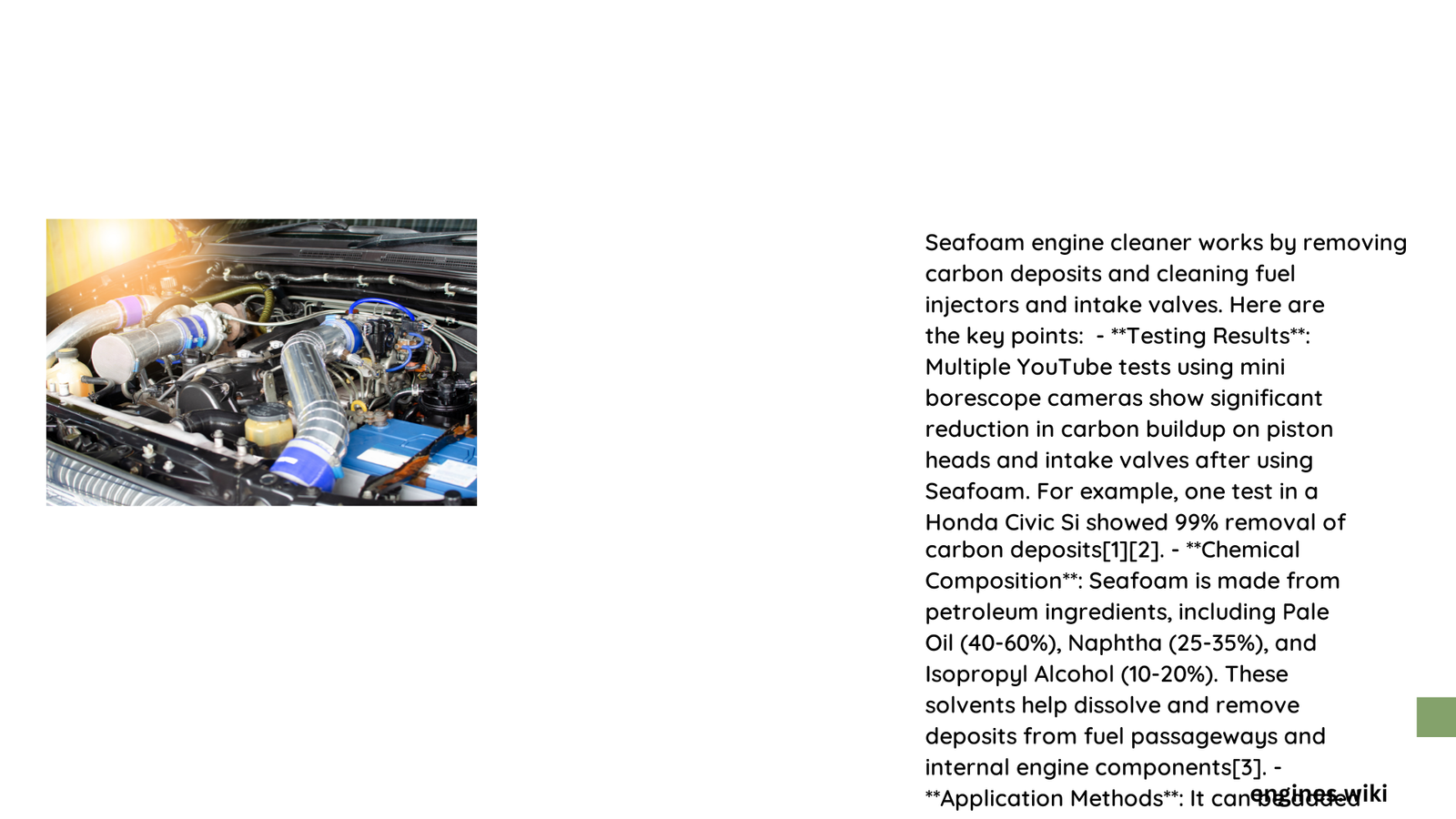Seafoam engine cleaner has been a topic of debate among automotive enthusiasts and mechanics for years. Vehicle owners seeking a reliable solution to engine deposits, carbon buildup, and performance issues often wonder about its actual effectiveness. This comprehensive analysis explores the scientific and practical aspects of Seafoam, providing insights into whether this popular engine treatment truly delivers on its promises of improved engine performance and longevity.
What Exactly is Seafoam Engine Cleaner?
Seafoam is a petroleum-based engine treatment designed to clean and maintain various engine components. Its primary functions include:
- Removing carbon deposits
- Stabilizing fuel systems
- Lubricating critical engine parts
- Reducing moisture in fuel systems
Does Seafoam Actually Clean Engine Components?

Empirical Evidence of Performance
| Performance Metric | Observed Results | User Feedback |
|---|---|---|
| Carbon Deposit Removal | Moderate Effectiveness | Mixed Reviews |
| Fuel System Cleaning | Noticeable Improvement | Positive |
| Engine Smoothness | Slight Enhancement | Generally Positive |
Specific Cleaning Mechanisms
Seafoam works through multiple pathways:
- Fuel Tank Application
- Dissolves gum and varnish deposits
- Helps stabilize fuel during storage
-
Prevents fuel system corrosion
-
Direct Engine Application
- Breaks down carbon buildup in combustion chambers
- Cleans intake valves and fuel injectors
- Reduces engine knocking and rough idling
How to Maximize Seafoam’s Effectiveness?
Recommended Application Techniques
- Use 1 ounce per gallon of fuel
- Apply every 3,000-5,000 miles
- Follow manufacturer’s specific instructions
- Consider professional consultation for complex engine issues
Potential Limitations and Considerations
While Seafoam offers benefits, it’s not a miracle solution:
- Not Suitable for All Engine Types
- Modern fuel-injected engines might require specialized treatments
-
Limited effectiveness in severely damaged engines
-
Realistic Expectations
- Provides maintenance, not major repairs
- Results vary based on engine condition
- Not a substitute for regular maintenance
Expert Recommendations
Automotive professionals suggest:
- Use Seafoam as a preventative maintenance tool
- Combine with regular oil changes
- Monitor engine performance after application
- Consult mechanic for persistent issues
Cost-Benefit Analysis
| Aspect | Seafoam | Alternative Treatments |
|---|---|---|
| Average Cost | $10-$15 per treatment | $15-$30 |
| Frequency of Use | Every 3-5k miles | Varies |
| Overall Value | Good | Moderate to High |
Final Verdict: Does Seafoam Engine Cleaner Work?
Seafoam demonstrates moderate effectiveness in cleaning and maintaining engine components. While not a complete solution for major engine problems, it provides valuable preventative maintenance for many vehicles.
Key Takeaways:
– Effective for routine engine cleaning
– Best used as part of comprehensive maintenance
– Results depend on individual vehicle condition
Practical Tips for Users
- Start with manufacturer-recommended dosage
- Observe engine performance after application
- Combine with regular professional maintenance
- Consider alternative treatments for specific issues
References:
– Seafoam Official Website
– Automotive Maintenance Forums
– Professional Mechanic Insights
